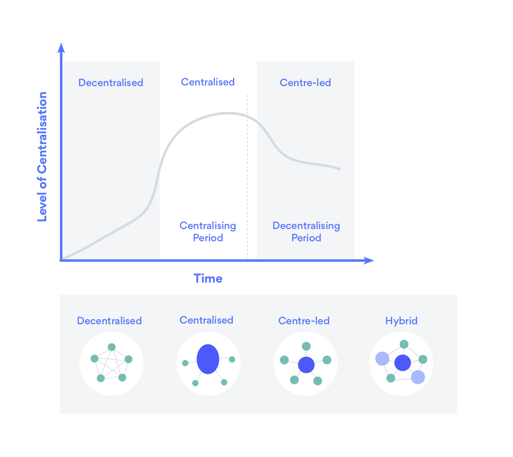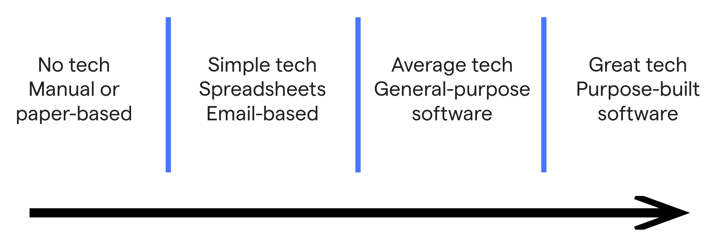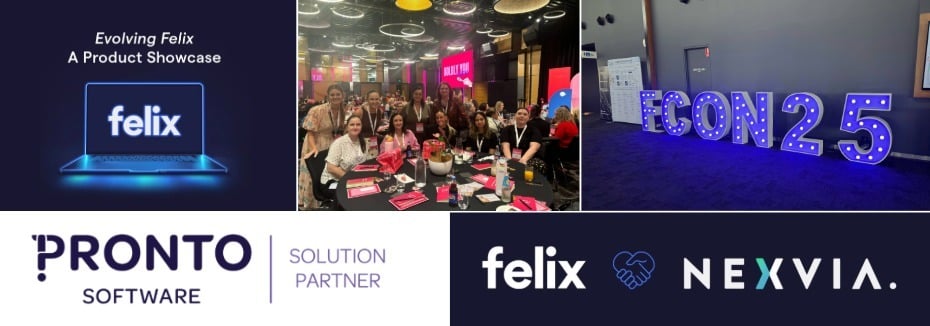Optimising procurement in project-centric industries: the project-led centrally enabled approach

Project-centric industries such as construction, mining, utilities, resources and defence have different procurement needs to industries that operate in a single location. Although procurement activities are project specific, reporting and ESG requirements are organisation-wide, which requires a different approach to procurement management.
Managing procurement through a project-led but centrally enabled system enables projects to operate independently whilst keeping all data centralised. This means that management can benefit from having a single source of truth, enhanced decision-making capability and ease of reporting that a central system provides.
Benefits of project-led, centrally enabled procurement
In a previous article, we have touched on the evolution of the procurement operating model – with hybrid (or project-led centrally enabled) as the most mature one on the spectrum.

Let’s recap some of the reasons you may want to adopt this model.
Standardisation
It promotes the use of standardised procurement processes, tools, and templates, which can enhance efficiency, reduce errors, and facilitate consistency in procurement practices across projects.
Cost savings
Centralised category management can enable cost savings/control via negotiation with preferred vendors, whilst local project teams having access or knowledge of local supply chain can also enable savings.
Risk mitigation
Centralised oversight ensures that procurement activities adhere to legislations, company policies, and industry standards, whilst also allowing for robust risk management strategies that can help identify, assess, and mitigate potential risks linked to procurement, supply chain interruptions, and contractual responsibilities.
Flexibility and speed
Projects are given a degree of autonomy to make procurement decisions tailored to their specific needs, budgets, and timelines. By streamlining procurement processes and utilising standardised templates and procedures, organisations can often expedite the procurement process and reduce administrative overhead.
Knowledge sharing
Lessons learned or vendor experience information from previous projects can be shared across the organisation, enabling continuous improvement in procurement practices.

Enablers of project-led centrally enabled procurement
If you are thinking of switching or moving up to this hybrid procurement operating model, it’s essential to consider the key elements that would support a successful implementation.
Central procurement team
The essential element of this approach is a proficient and well-informed central procurement team. This team bears the responsibility of formulating and upholding procurement policies, standards, and strategies that can be tailored to the distinct requirements of individual projects.
Project autonomy
On the other hand, projects should have a degree of autonomy to make procurement decisions based on their specific needs, budgets, and schedules.
Standardised processes and tools
The use of standardised procurement processes, templates, and tools helps ensure consistency and efficiency across projects. These include procurement guidelines, contract templates, and software for procurement management. These policies establish the framework within which both central and project teams operate.
Training and skill development
It is essential to provide training for both the central and project teams to ensure they have the skills and knowledge needed to make informed procurement decisions and comply with standardised practices.
Technology and data management
The use of procurement technology and data management systems helps central and project teams efficiently track, document, and manage procurement processes and decisions.
Why you need purpose-built procurement software
Zooming in on technology as an enabler, let’s see how having purpose-built software can help project-driven industries specifically. Depending on where your organisation is on this spectrum, the benefits reaped will vary.

Tailored to unique industry needs
Purpose-built software is specifically designed to support the intricacies and processes of project-led centrally enabled procurement. Moreover, the nature of high-risk and subcontractor dependent supply chain in industries such as construction and mining adds a degree of complexity that not all software packages are made for.
Optimised workflow
Purpose-built software streamlines procurement processes in a way that complements the approach's unique structure. It can spit out prompts/alerts, automate routine tasks, making the entire procurement process more efficient.
Cost effectiveness
Rather than spending money on customising off-the-shelf software that may not yield desired results or may chew up significant resources, leaning on purpose-built software can help get teams up and running faster, hence, quicker ROI.
If you’re further down the spectrum above, it’s quite obvious that having software would help cut down on so many hours of admin burden.
Risk management
The risk of duplication, spend maverick, inaccurate data - to name a few – is greatly reduced as you move up the spectrum of tech maturity, thanks to functionality such as audit trail.
Innovation
Good software vendors release new features in response to market demand, enabling organisations access to best practices to grow with the times themselves. Think new regulatory requirements and how having purpose-built software can let you roll that out smoothly.
How Felix helps HQ
At Felix, we have built our software tailored to the needs to project-driven industries from the ground up, such as construction, mining, utilities, facilities management etc.
Below are some ways our software helps the central procurement team, and in turn, upper management.
- Visibility: Always have access to the most up-to-date data on your third-party vendors and suppliers, as well as statuses of sourcing events or projects across the whole organisation
- Governance: Confidently roll out procurement procedures and the system will ensure they are adhered to
- Single source of truth: No more data duplication or inaccuracies as the platform becomes your source of truth for prequalification, vendor management, compliance, performance evaluation and RFQ progress
- Shared insights: Capture lessons learned to inform future decision making
- ESG: Reporting is made easy for local, Indigenous owned, equal opportunity requirements and more
How Felix helps project teams
For those at the coalface, our vendor management and procurement platform also helps get more time back in their day.
- Streamlined workflows: With preconfigured workflows set by HQ, there’s no need to scratch heads and wonder “does this follow the correct procedure?”
- Faster approvals: Connecting different stakeholders in the one platform streamlines this process and helps identify bottlenecks
- Independence: With permission settings, approved supplier list and other preconfigured templates, project teams can enjoy the freedom to do their work without worrying about breaking corporate rules
- Visibility: Have access to data on their own supplier pool and preconfigured views of project procurement statuses
Want to see Felix in action and how we can help you with project-led centrally enabled procurement? Feel free to get in touch.

Recent Articles
2025 in review: Milestones, insights and achievements
2025 – a year of that brought meaningful developments for Felix as we continue to address the evolving needs of organisations navigating complex supply-chain environments.
Top 10 reasons for a centralised vendor database
As organisations grow, so does the complexity of managing vendor relationships. Many still rely on spreadsheets or siloed systems, which can lead to inefficiencies, data inconsistencies, and compliance risks. A centralised vendor database offers a smarter, more scalable solution that brings structure, visibility, and control to procurement operations.
Here are the top 10 reasons why centralising your vendor data is a strategic move.
Five ways poor contract storage could be costing your organisation money
Contracts are the backbone of every business relationship – legally binding documents that define expectations, responsibilities, and value.
But what if the way your organisation stores those contracts is quietly costing you money?
Let's stay in touch
Get the monthly dose of supply chain, procurement and technology insights with the Felix newsletter.





